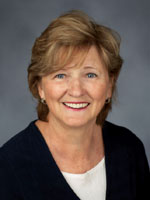Preface
Acknowledgments
About the Authors
Part I. Planning Instruction
1. Decide What to Teach
Assess to Identify Gaps in Performance
Establish Logical Sequences of Instruction
Consider Contextual Variables
2. Decide How to Teach
Set Instructional Goals/Establish Performance Standards
Choose Instructional Methods and Materials
Establish Grouping Structures
Pace Instruction Appropriately
Monitor Performance and Replan Instruction
3. Communicate Realistic Expectations
Teach Goals, Objectives, and Standards
Teach Students to Be Active, Involved Learners
Teach Students Consequences of Performance
Part II. Managing Instruction
4. Prepare for Instruction
Set Classroom Rules/Communicate and Teach Classroom Rules
Communicate Consequences of Behavior
Handle Disruptions Efficiently
Teach Students to Manage Their Own Behavior
5. Use Time Productively
Establish Routines and Procedures
Organize Physical Space
Allocate Sufficient Time to Academic Activities
6. Establish Positive Environments
Make the Classroom a Pleasant, Friendly Place
Accept Individual Differences
Establish Supportive, Cooperative Learning Environments
Create a Nonthreatening Learning Environment
Part III. Delivering Instruction
7. Present Information
Gain and Maintain Attention
Review Prior Skills or Lessons
Provide Organized, Relevant Lessons
Show Enthusiasm and Interest
Use Rewards Effectively
Consider Level and Student Interest
Model Thinking Skills
Teach Fact-Finding Skills
Teach Divergent Thinking
Teach Learning Strategies
Develop Automaticity
Vary Opportunities for Practice/Vary Methods of Practice
Monitor Amount of Work Assigned
8. Monitor Presentations
Give Immediate, Frequent, Explicit Feedback/Provide Specific Praise and Encouragement
Model Correct Performance
Provide Prompts and Cues
Check Student Understanding
Monitor Performance Regularly/Monitor Performance During Practice
Use Peers to Improve Instruction
Provide Opportunities for Success/Limit Opportunities for Failure
Monitor Engagement Rates
9. Adjust Presentations
Adapt Lessons to Meet Student Needs
Provide Varied Instructional Options
Alter Pace
Part IV. Evaluating Instruction
10. Monitor Student Understanding
Check Understanding of Directions
Check Procedural Understanding
Monitor Student Success Rate
11. Monitor Engaged Time
Check Student Participation/Teach Students to Monitor Their Own Participation
12. Keep Records of Student Progress
Teach Students to Chart Their Own Progress
Regularly Inform Students of Performance
Maintain Records of Student Performance
13. Use Data to Make Decisions
Use Student Progress to Make Teaching Decisions
Use Data to Decide If More Services Are Warranted/Use Student Progress to Decide When to Discontinue Services
Appendix A: RTI Accommodations/Modifications Checklist
Appendix B: RTI Accommodations/Modifications Worksheet
Appendix C: Documentation of RTI Accomodations/Modifications
References
Additional Readings
Selected Internet Resources: RTI Accomodations/Modifications
Index





